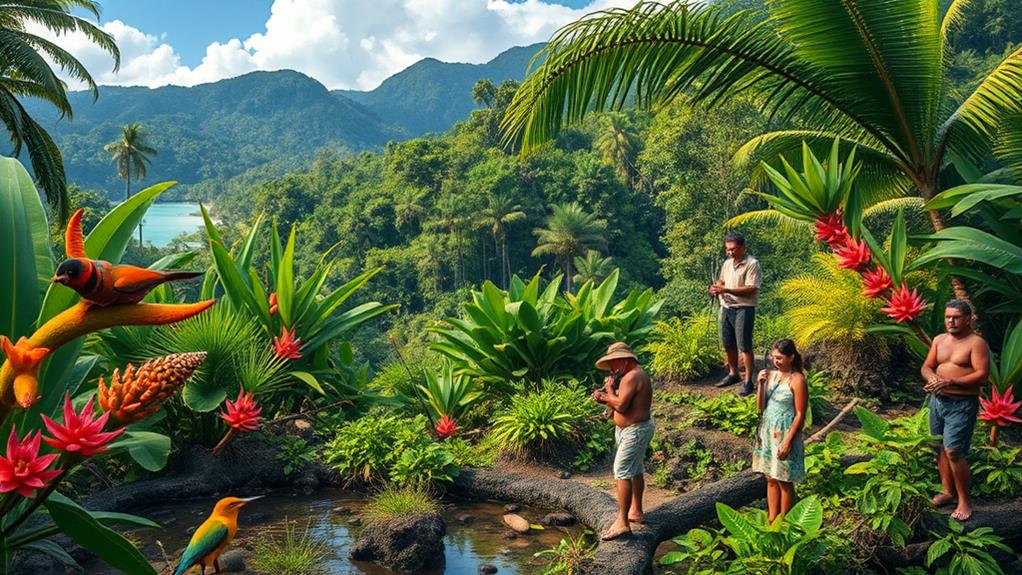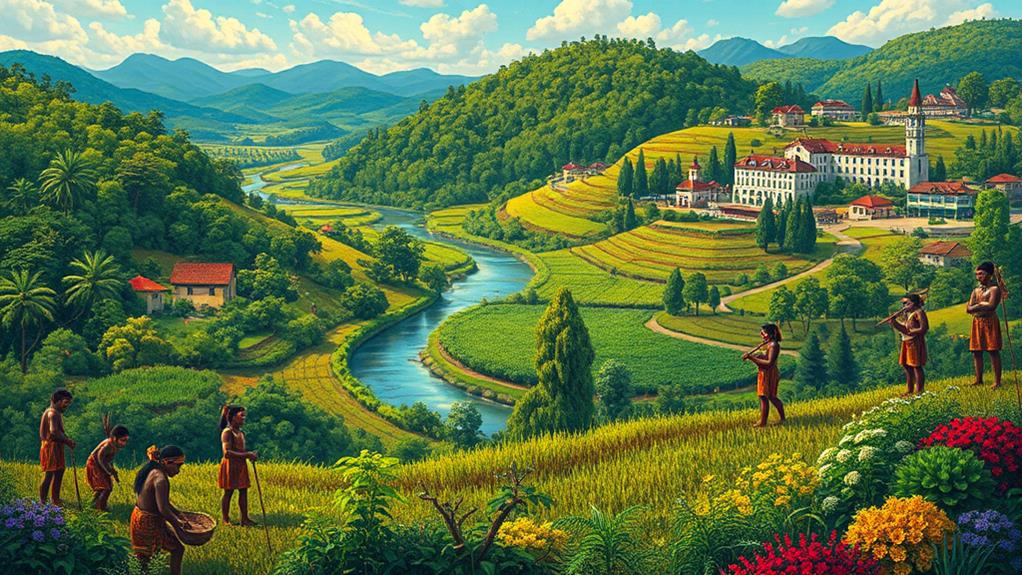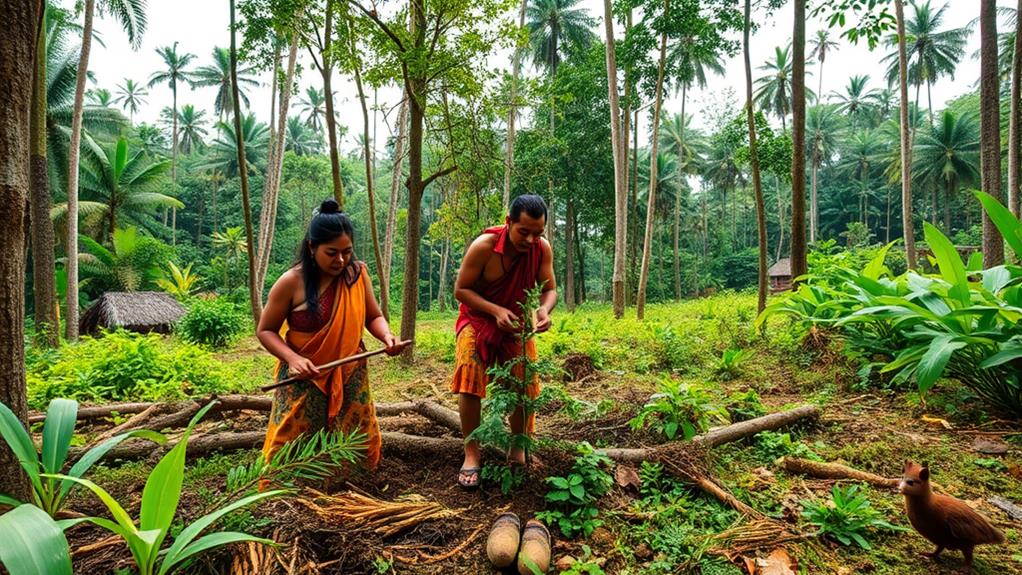Indigenous communities in the Philippines play a crucial role in managing natural resources. They use traditional ecological knowledge and cultural practices to create Indigenous Community Conserved Areas. Local community empowerment is at the core of their conservation efforts, as indigenous communities have a deep understanding of their environment and have been effectively managing their lands for generations. By recognizing and supporting their role in natural resource management, we can help protect biodiversity and promote sustainable development in these areas. Additionally, local community empowerment can also lead to greater social and economic benefits for indigenous communities, creating a win-win situation for conservation and the well-being of these communities.
These areas have grown to cover over 150,000 hectares since 2016. This work helps protect biodiversity and shows how cultural identity links to sustainability.
Support from laws like the Indigenous Peoples' Rights Act and the ENIPAS Act helps these communities participate in resource management.
However, they face challenges such as land encroachment and climate change, which threaten their efforts.
Their stewardship not only conserves ecosystems but also offers innovative solutions to environmental issues today. This highlights the significant impact of Indigenous communities on resource management.
Significance of Philippine Biodiversity

The Philippine biodiversity is extremely important because the country is home to a wide variety of unique plants and animals. The Philippines is one of the 18 mega-biodiverse countries in the world, meaning it has a lot of different species. Almost 50% of these species are only found in the Philippines, which makes the country special in terms of ecology.
There are 228 Key Biodiversity Areas (KBAs) in the Philippines, which are places that support a lot of different species. This means that the country contributes to about two-thirds of the world's biodiversity. Because of this, it's very important to protect these areas for the health of the planet.
The Philippine Biodiversity Strategy and Action Plan (PBSAP) aims to protect 30% of land, freshwater, and marine areas by 2030. This plan shows how urgent it's to conserve natural resources. Protecting biodiversity isn't just about saving animals and plants; it also involves respecting the traditional knowledge of Indigenous Peoples.
These communities have valuable insights gained over generations about how to manage their natural resources sustainably. The relationship between biodiversity and Indigenous stewardship shows that managing protected areas well can create stronger ecosystems.
Indigenous Peoples as Stewards
Indigenous Peoples are essential as stewards of biodiversity. They manage large areas of land and protect ecosystems that are important for nature's health. Their strong connection to their ancestral lands helps them effectively manage natural resources and use conservation methods that support biodiversity.
- Traditional Ecological Knowledge (TEK) is used by Indigenous Peoples to guide their conservation efforts. This knowledge improves how forests are managed and helps ecosystems become more resilient to changes.
- Indigenous Community Conserved Areas (ICCAs) have been established, covering over 150,000 hectares since 2016. These areas allow Indigenous communities to take charge of their natural resources, leading to better conservation results.
- Cultural Practices are integrated into community conservation efforts. This connection strengthens the bond between biodiversity and cultural heritage, showing that protecting nature is part of their identity.
- Legislative Support is provided by the Indigenous Peoples' Rights Act (IPRA) of 1997. This law recognizes the rights of Indigenous Peoples, empowering them to manage and protect their lands effectively.
Institutional Support for Communities

Institutional support is essential for helping communities manage and protect their natural resources. The Philippine ICCA Project, started in 2016, shows how this support can work. It focuses on Indigenous Community Conserved Areas (ICCAs), which help with biodiversity conservation. With help from the Department of Environment and Natural Resources (DENR) and the National Commission on Indigenous Peoples (NCIP), more than 150,000 hectares of ICCAs have been identified, giving Indigenous Peoples more control over their lands.
The ENIPAS Act of 2018 strengthens this support by officially recognizing ICCAs. This law allows Indigenous communities to use their traditional methods for protecting resources. Collaboration with the United Nations Development Programme (UNDP) has also helped incorporate the UN Declaration on the Rights of Indigenous Peoples (UNDRIP) into local strategies for biodiversity, ensuring that communities have a say.
| Institutional Support | Impact on Communities |
|---|---|
| ICCA Recognition | Increased control over natural resources |
| ENIPAS Act Implementation | Legal empowerment for conservation efforts |
| Mapping Initiatives | Documentation of traditional knowledge |
| Community Conservation Plans | Tailored strategies for sustainable use |
These combined efforts from different institutions not only improve community governance but also promote sustainable practices that are important for protecting biodiversity.
Challenges in Conservation Efforts
Despite progress in empowering Indigenous communities, significant challenges remain in conservation efforts. These challenges threaten both the communities and the biodiversity they work to protect. Here are the main issues:
- Land Encroachment: Activities like mining, logging, and farming invade traditional lands. For example, logging can destroy forest habitats, making it harder for wildlife to survive.
- Economic Pressures: Many Indigenous Peoples struggle to make a living. This financial strain can lead some to adopt harmful practices, such as overfishing, which conflict with their conservation goals.
- Climate Change Impacts: Changing weather patterns create new problems. For instance, droughts can make it difficult for communities to rely on their traditional farming methods, threatening food security.
- Limited Participation: Indigenous voices are often excluded from decision-making. This lack of involvement means important cultural knowledge and conservation strategies are overlooked.
These challenges show that Indigenous communities must carefully balance preserving their culture and sustainably managing their resources.
Addressing these issues is essential for the success of conservation efforts.
Achievements in Resource Management

In recent years, Indigenous communities have achieved significant success in managing natural resources. Since 2016, these communities have marked off over 155,000 hectares as Indigenous Community Conserved Areas (ICCAs). This action has allowed them to gain better control over their ancestral lands.
The ICCA Project, supported by the UNDP and Global Environment Facility, has also created 10 community conservation and business plans that help promote sustainable ways of living while protecting nature.
ICCAs play a critical role in fighting climate change by storing around 10.5 million tons of carbon. This amount is similar to the annual emissions produced by 7 million cars, highlighting their importance in reducing greenhouse gases.
The formation of the Bukluran ng mga Pamayanang Nangangalaga sa Kalikasan National ICCA Network has improved teamwork among Indigenous Peoples, making their resource management efforts more effective.
Moreover, Indigenous-led conservation initiatives document traditional resource management practices. This documentation helps ensure that ecosystems are used sustainably.
These efforts not only protect wildlife but also make local communities stronger and more resilient. This shows how Indigenous communities are vital to effective natural resource management in the Philippines.
Questions and Answers
What Is the Important Role of the Indigenous Community in the Philippines?
Indigenous communities in the Philippines are vital for preserving culture and protecting land. They maintain traditional practices that help keep their heritage alive. For example, they pass down stories, music, and crafts that reflect their unique identities. These communities also manage the land responsibly. They use sustainable farming and fishing methods that keep the ecosystem healthy. For instance, the Ifugao people practice terrace farming, which prevents soil erosion. Moreover, Indigenous groups support local economies. By using their traditional knowledge, they create jobs and promote eco-tourism. Overall, Indigenous communities help maintain ecological balance and cultural identity in their ancestral domains.
What Is the Role of Indigenous Knowledge in Natural Resource Management?
Indigenous knowledge is important for managing natural resources. It includes traditional practices and understanding of the environment. For example, Indigenous communities often use sustainable harvesting methods, which help preserve local wildlife. This leads to better biodiversity.
Additionally, Indigenous knowledge supports cultural preservation. When communities manage their resources, they maintain their traditions and identity. This is seen in how some groups use specific plants for food and medicine, ensuring those practices continue.
Community governance is another key aspect. Indigenous groups often have their own rules for managing resources, which can lead to more effective conservation efforts. For instance, in some regions, local leaders decide when to fish or hunt, based on their understanding of animal populations.
How Do Philippine Indigenous Communities Contribute to the Biodiversity and Environmental Sustainability of the Regions They Inhabit?
Philippine Indigenous communities play a vital role in enhancing biodiversity. They use traditional practices like crop rotation and organic farming, which help maintain soil health and support diverse plant species. For example, the Ifugao people practice rice terrace farming, which not only produces food but also creates habitats for various wildlife.
These communities also focus on wildlife conservation. They protect endangered species through methods such as sacred groves and community-led patrols. The T'boli people, for instance, have designated areas where hunting is prohibited, allowing animal populations to thrive.
In terms of forest management, Indigenous groups use selective logging and agroforestry techniques that sustain both the forest and their livelihoods. The Aeta people, for example, practice sustainable harvesting of forest products, ensuring that resources are available for future generations.
What Are the Indigenous Resources of the Philippines?
Indigenous resources in the Philippines include traditional practices, sacred sites, and medicinal plants. Traditional practices, such as the use of herbal medicine, help communities maintain health naturally. Sacred sites, like ancient burial grounds, are important for cultural heritage and spiritual beliefs. Medicinal plants, such as lagundi for cough relief and sambong for kidney health, are used by many indigenous groups. These resources support ecological balance by promoting biodiversity and sustainable living. They also enhance community governance as indigenous people manage their lands and resources, ensuring conservation for future generations.